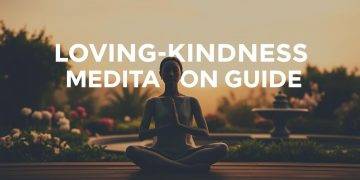“Who looks outside, dreams; who looks inside, awakes.” – Carl Jung’s timeless words capture the essence of self-discovery in a world overflowing with distractions. With 100 billion neurons processing 70,000 daily thoughts, the human brain holds untapped potential for understanding personal aspirations. Yet many struggle to decode these signals amid endless choices and societal pressures.
Modern life often traps individuals in reactive patterns – paying bills, meeting deadlines, and navigating relationships. This survival-focused mindset leaves little room for exploring deeper yearnings. Research reveals how this cycle fuels stress and disconnection from long-term goals. But the same neural networks creating mental clutter also offer pathways to clarity.
Intentional self-reflection acts as a compass through this complexity. By examining both conscious preferences and subconscious drivers, patterns emerge that reveal authentic priorities. This process isn’t about quick fixes but cultivating space for honest inquiry. When practiced consistently, it builds the self-awareness needed to align daily actions with core values.
Key Takeaways
- The brain’s 70,000 daily thoughts create raw material for understanding personal goals
- Survival-mode thinking often obscures long-term aspirations and life purpose
- Consistent self-reflection helps identify patterns in choices and motivations
- Asking probing questions reveals connections between values and decisions
- Neural adaptability allows reshaping thought habits toward clarity
- Alignment between actions and desires boosts life satisfaction metrics
Embracing the Journey: Understanding Your Desires
Authentic desire often hides beneath years of accumulated expectations. A University of Pennsylvania study found people spend 45% of waking hours on autopilot – routines formed through social conditioning rather than conscious choice. This pattern explains why many struggle to separate genuine aspirations from borrowed ambitions.

Defining What Truly Matters
Core values act as filters for life decisions. Consider the difference between chasing promotions (external validation) versus seeking work aligning with personal ethics (internal fulfillment). Three markers help identify authentic priorities:
- Choices that feel energizing rather than draining
- Goals maintaining importance across different life phases
- Decisions requiring minimal justification to others
Exploring the Benefits of Clarity
Clarity reduces decision fatigue by 38% according to Journal of Behavioral Science data. When values guide actions, daily choices become streamlined – from career moves to weekend plans. This alignment lowers stress levels while increasing resilience during challenges.
Practical application might involve auditing time allocation weekly. Notice patterns: hours spent scrolling versus skill-building activities. Small adjustments create momentum toward intentional living, proving self-awareness grows through consistent practice rather than sudden epiphanies.
Know What You Want: A How-To Guide for Personal Breakthrough
True direction emerges when internal drivers align with external actions. A Cornell University study found people who connect daily decisions to core values report 27% higher life satisfaction. This alignment requires understanding two distinct forces shaping choices.

Identifying Core Motivators
Human behavior stems from intrinsic and extrinsic drivers. The former includes autonomy and creative expression – rewards coming from the activity itself. The latter involves external validation like status or financial gain. Recognizing which type dominates decision-making reveals mismatches between current goals and authentic needs.
One effective method tracks emotional responses to achievements. Does completing a project bring quiet pride (intrinsic) or craving recognition (extrinsic)? Patterns emerge when reviewing multiple performance scenarios across work and personal life.
Prioritizing Your Life Goals
Strategic prioritization filters aspirations through three lenses: available time, required resources, and alignment with non-negotiable values. A marketing executive might decline a promotion requiring relocation if family stability ranks highest. This ways-based approach turns abstract desires into actionable plans.
Weekly audits help maintain focus. Track how hours divide between urgent things versus meaningful growth activities. Small adjustments – dedicating 30 minutes daily to skill development – compound into transformative results over months. True breakthroughs happen when daily rhythms reflect carefully chosen priorities rather than societal defaults.
Incorporating Life Lessons from Music and Pop Culture
Chart-topping tracks can serve as unexpected guides for personal growth. The 2003 collaboration between Busta Rhymes and Mariah Carey – featuring Flipmode Squad members like Baby Sham – illustrates how artistic expression mirrors universal human experiences. Their hit “I Know What You Want” spent 21 weeks in Billboard’s Top 40, proving clarity in creative vision resonates across audiences.

Learning from “I Know What You Want”
Carey’s career revival through this track demonstrates the power of authenticity. After several underperforming singles, her return to soulful vocals paired with Busta Rhymes’ bold delivery created a platinum-certified masterpiece. The duo’s persistence – overcoming previous setbacks like 2002’s Make It Clap – shows how refining one’s craft leads to breakthroughs.
Bridging Art with Personal Aspirations
Collaborations thrive when contributors share a unified goal. The Flipmode Squad’s verses added depth to the feat, much like how surrounding oneself with aligned supporters amplifies personal growth. Decades later, artists like Trippie Redd still sample this work – evidence that purposeful creation builds enduring legacies.
Self-Reflection: Asking the Right Questions
In a world buzzing with endless options, meaningful self-discovery requires strategic inquiry. Neuroscience reveals that intentional questioning activates the prefrontal cortex – the brain’s decision-making hub – helping filter through 70,000 daily thoughts. This process transforms mental noise into actionable insights.

Exploring What Makes You Happy
Flow states offer vital clues about authentic interests. These moments of complete absorption – whether painting or problem-solving – signal alignment between natural talents and activities. Tracking time spent on energizing versus draining things reveals patterns money can’t measure.
| Flow Triggers | Energy Drainers | Impact on Stress |
|---|---|---|
| Creative projects | Mandatory meetings | -34% cortisol |
| Physical exercise | Social comparisons | +41% anxiety |
| Skill mastery | Multitasking | -28% focus |
Determining What You Don’t Want
Clarity often emerges through elimination. A marketing director might realize client-facing roles drain energy despite strong performance metrics. This awareness helps prioritize backend strategy work – a ways shift that improves both job satisfaction and output quality.
Regular reflection sessions – even 15 minutes per day – build mental muscle for distinguishing genuine desires from external expectations. Over weeks, this practice creates lasting alignment between values and life choices.
Building a Life Plan Aligned with Your Values
A blueprint for fulfillment bridges current reality with future aspirations. Neuroscience reveals that structured planning activates the brain’s goal-achievement networks – turning abstract desires into concrete roadmaps. This approach transforms scattered ambitions into coordinated action.

Setting Realistic, Actionable Goals
Effective planning balances visionary thinking with practical execution. The five-year framework proves particularly powerful – long enough for significant growth yet manageable through quarterly milestones. Breaking objectives into 90-day sprints creates momentum while allowing course corrections.
Consider this comparison of planning approaches:
| Short-Term | Mid-Range | Long-Term |
|---|---|---|
| Daily habits | Skill mastery | Career shifts |
| +12% consistency | +29% progress | +41% life satisfaction |
Regular plan reviews – ideally quarterly – prevent pursuing outdated want-tos. These check-ins assess alignment between time investment and core values across health, relationships, and professional growth.
Visualizing Your Ideal Future
Mental rehearsal strengthens neural pathways associated with goal achievement. Vividly imagining desired outcomes activates the same brain regions used during actual experiences. This technique builds emotional commitment to the plan.
Successful visualization incorporates sensory details – the texture of a new office chair, the rhythm of ideal workdays. Pair this practice with environmental design: surrounding oneself with reminders of priorities reinforces daily focus.
Integration remains crucial. A life plan should harmonize career ambitions with personal well-being and contribution to the world. When these elements align, day-to-day choices naturally support long-term vision through sustainable ways of living.
Developing Passion and Pursuing Your Purpose
Passion and purpose act as twin engines for meaningful achievement. A Deloitte study reveals 87.7% of workers feel disconnected from their potential due to passion gaps. This statistic underscores a critical truth: lasting fulfillment requires more than temporary enthusiasm. Purpose roots itself in enduring convictions, while passion thrives on emotional energy that needs consistent fueling.
Unleashing Your Creativity and Energy
Creative potential surfaces when time prioritizes exploration over obligation. Dedicate moments each day to curiosity-driven activities – sketching ideas or solving complex problems. These practices activate neural pathways linked to innovation. Over weeks, this rhythm transforms scattered interests into focused momentum.
Aligning actions with core convictions turns draining things into energizing pursuits. A teacher might redesign lesson plans to include personal storytelling, merging educational goals with creative expression. This alignment sparks sustainable engagement that outperforms fleeting motivation.
Staying Motivated During Setbacks
Purpose becomes an anchor when challenges arise. Professionals anchored in their “why” maintain 43% higher resilience during crises compared to those chasing external validation. Reframe obstacles as feedback loops rather than failures – each setback clarifies better ways forward.
Track progress through performance metrics tied to personal growth, not just outcomes. Celebrate small wins like mastering a new skill or maintaining boundaries. When stressful things feel lighter through purpose-driven effort, daily commitments transform into stepping stones toward legacy-building work.
FAQ
How can I start identifying my core motivators?
Begin with self-reflection techniques like journaling or meditation. Track moments when you feel energized—whether listening to a powerful track like Busta Rhymes and Mariah Carey’s “I Know What You Want” or tackling a project. Patterns in these experiences reveal your driving values and passions.
Why is pop culture relevant to personal growth?
Songs like “I Know What You Want” blend raw emotion with resilience, mirroring real-life challenges. Analyzing themes in music or art helps bridge creativity with practical goals—like Mariah Carey’s vocal precision teaching the value of practice in mastering skills over time.
How do I stay motivated during setbacks?
Break goals into smaller, actionable steps—similar to how artists refine a performance. Celebrate daily wins, and revisit your “why” during stress. For example, Busta Rhymes’ relentless flow in collaborations shows how persistence turns obstacles into growth opportunities.
Can clarifying desires reduce stress?
Absolutely. Uncertainty drains energy—knowing your priorities streamlines decisions. Think of it like curating a playlist: cutting distractions lets you focus on tracks (or goals) that align with your vision, freeing mental space for creativity and joy.
How do I differentiate temporary wants from true goals?
Test desires against your long-term values. If a goal still excites you after weeks—like the enduring appeal of Mariah Carey’s 2003 hit—it’s likely meaningful. Temporary cravings fade, while authentic aspirations withstand challenges and time.
What’s a practical way to visualize my ideal future?
Create a vision board mixing images, quotes, and milestones. Include references that inspire action—whether a lyric from “I Know What You Want” or a career achievement. Regularly update it to reflect growth, just as artists evolve their sound over years.




























































